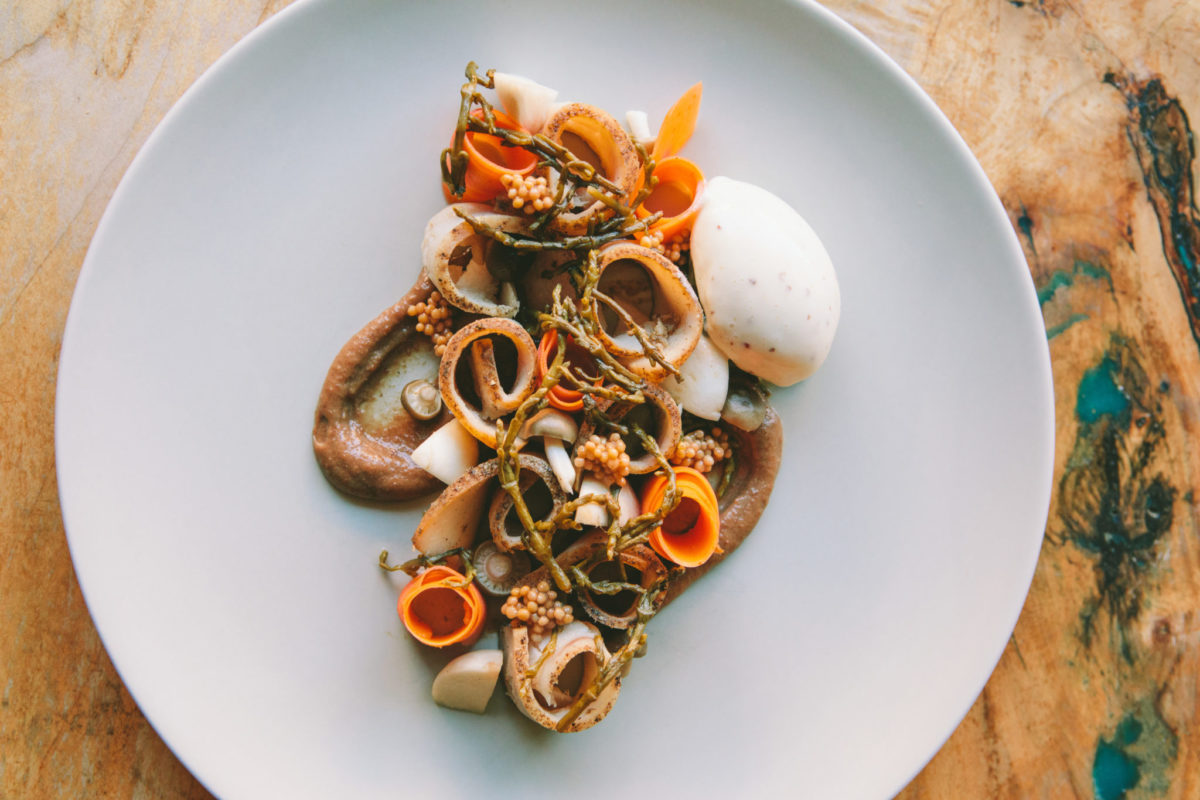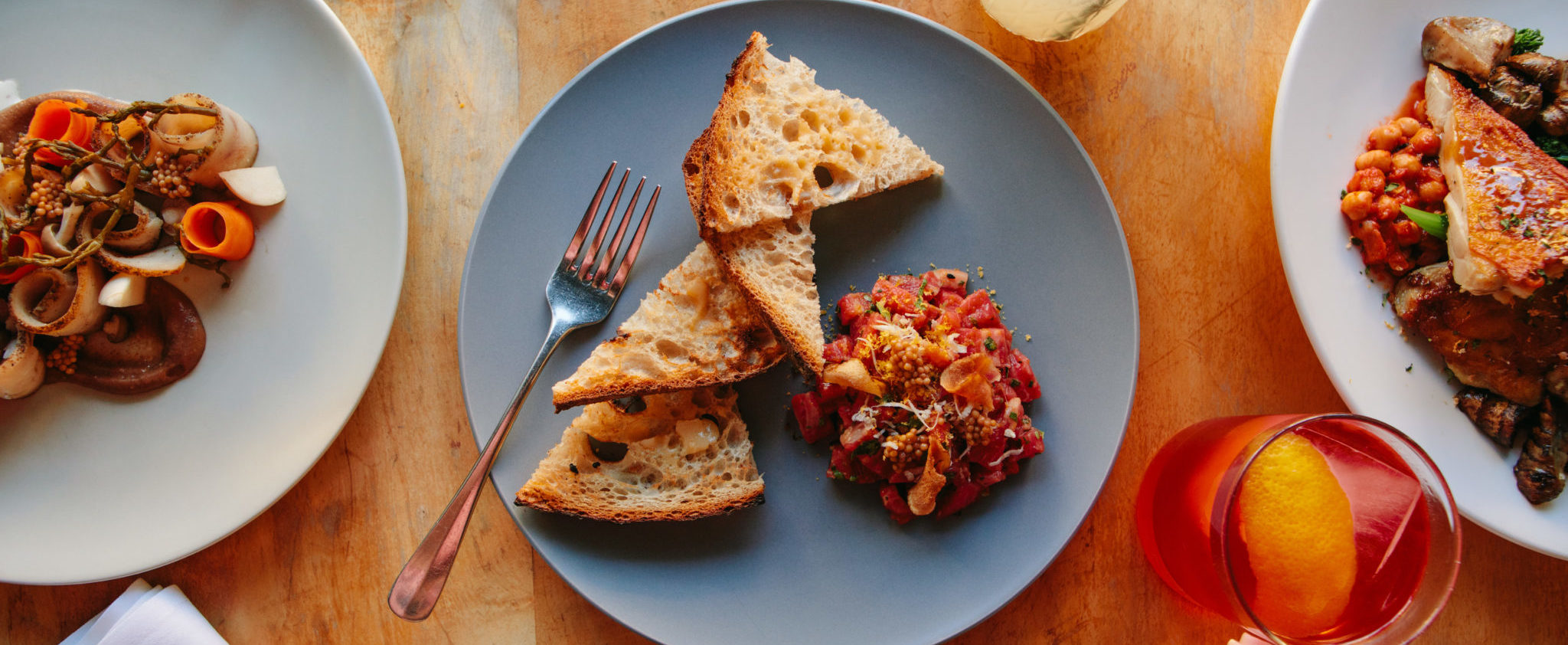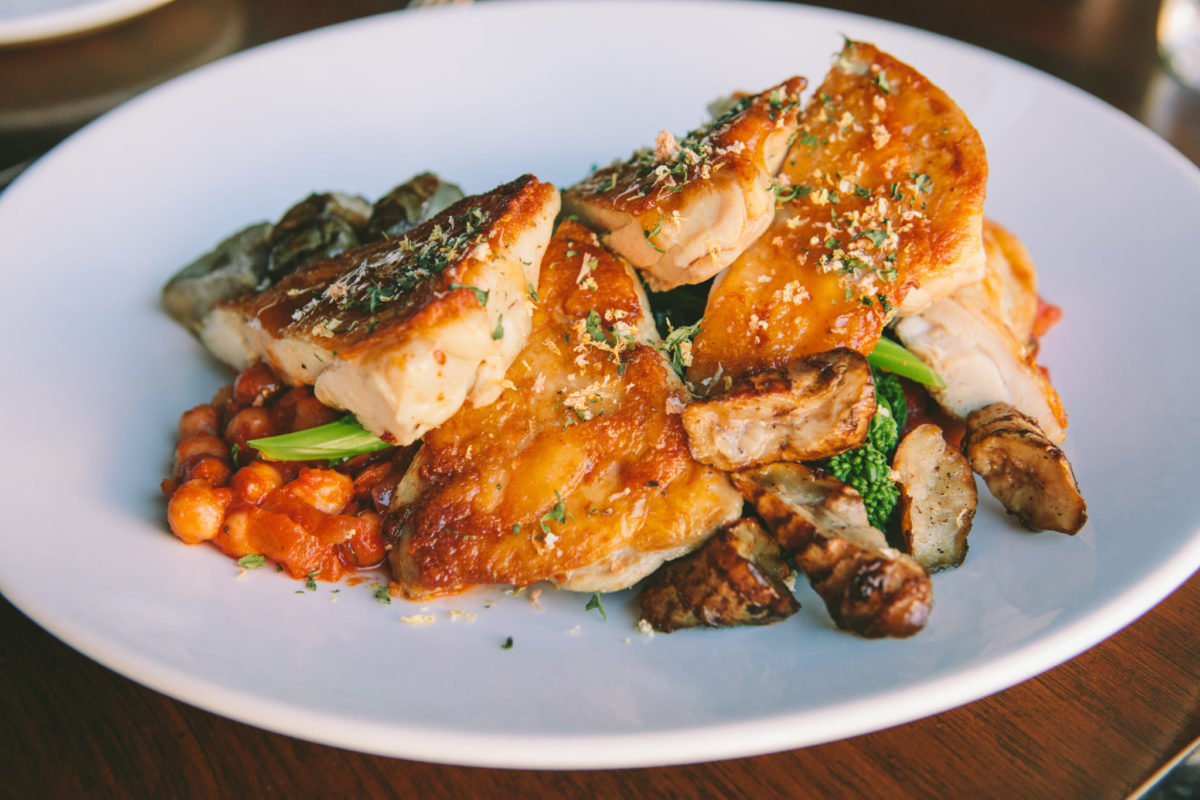- Guide
Puritan & Company
Ever wonder about a Puritan’s idea of a good feast? It’s pretty simple: “brown bread and the gospel,” said minister Matthew Henry in 1708. Although we’re in awe of their sailing and settling skills, these early New Englanders were not a group that knew how to party.

Hence our relief upon discovering that Puritan & Company is named not for our bible-and-stale-bread-eating forefathers, but rather for the Puritan Cake Company that occupied this airy, turquoise-and-wood Inman Square space in the early 20th century. Indeed, there is nothing Puritan about the epic wine list with varied selections from the world’s most prolific viticultural regions. (Also, where else in town can we get a Georgian pour by the glass?). Nor is our favorite cocktail—a mix of Mezcal, Aperol, Suze, and lime named “Naked & Famous”—particularly godly.

The bread that starts the meal has a very browned top, but its warm, fluffy dinner-roll insides smeared with whipped butter hint that this is going to be a decadent homage to old-school New England cooking. As the meal progresses, the theme loosens—pasta dishes could fit into any Italian menu; liver mousse and beef tartare are served as they might be in Paris—but all along the way, there are reminders: New England-born Moxie soda glazes lamb ribs. A swordfish pastrami sprinkled with woodsy mushrooms and pickled concoctions paints a vivid picture of fall foliage. And then there are those farmhouse ales in Libbey can glasses, the servers’ button-down plaid shirts, and the occasional taxidermied quail. Although it draws inspiration from history, there’s no denying that Puritan’s best fit is modern-day Cambridge.

Fun Fact
Here’s something decidedly puritanical: Chef Gilson is the thirteenth-generation descendant of a Mayflower passenger.
Tastes of Puritan & Company
So good we can't stop writing about it. Read more about Puritan & Company!



























